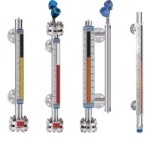 |
| Industrial Control Valve Cutaway View Courtesy Cashco |
What you will find:
- Terminology: A glossary of terms commonly used in the control valve world.
- Control Valve Basic Designs: Control valve classifications, cutaway illustrations showing the operating structure of different valve types, comparisons of varying valve designs.
- Characterization and Trim Design: Flow characteristic curves and comparisons for different valve types, showing how flow responds to valve position change.
- Control Valve Technical Considerations: FTC vs FTO, illustrations showing valve operation.
- Force-Balance Principle: Illustration and formula explanations of this basic operating principle.
- Actuator Basic Designs: Illustrations showing the differing arrangements for actuator operation.
- Control Valve Unit Action: Illustrations, diagrams, and explanations of a range of valve operating conditions, including loss of electrical power and loss of instrument air supply.
- Actuator Benchset Range: Shows practical relationship between instrument air pressure and valve ability to properly operate at various pressure conditions.
- Valve Positioner Basics: Definition of valve positioning, reasons to use a positioner, schematic illustrations of control loops.
- Control Loop Action: Charts and provides examples of 16 combinations of Process, Controller, Positioner, and Control Valve combinations.
- Control Valve Packing Designs: Describes and defines packing, common problems, current state of the art. Cutaway illustrations of various packing arrangements.
- Seat Leakage: Classifications, comparisons of different materials.
There is something of value in the document for everyone, and you will undoubtedly pick up something useful. Thanks go out to the engineers at Cashco for putting this together. You can discuss any aspect of your control valve applications with a product specialist. Your contact is always welcome.






